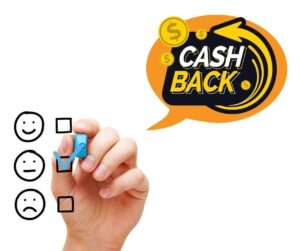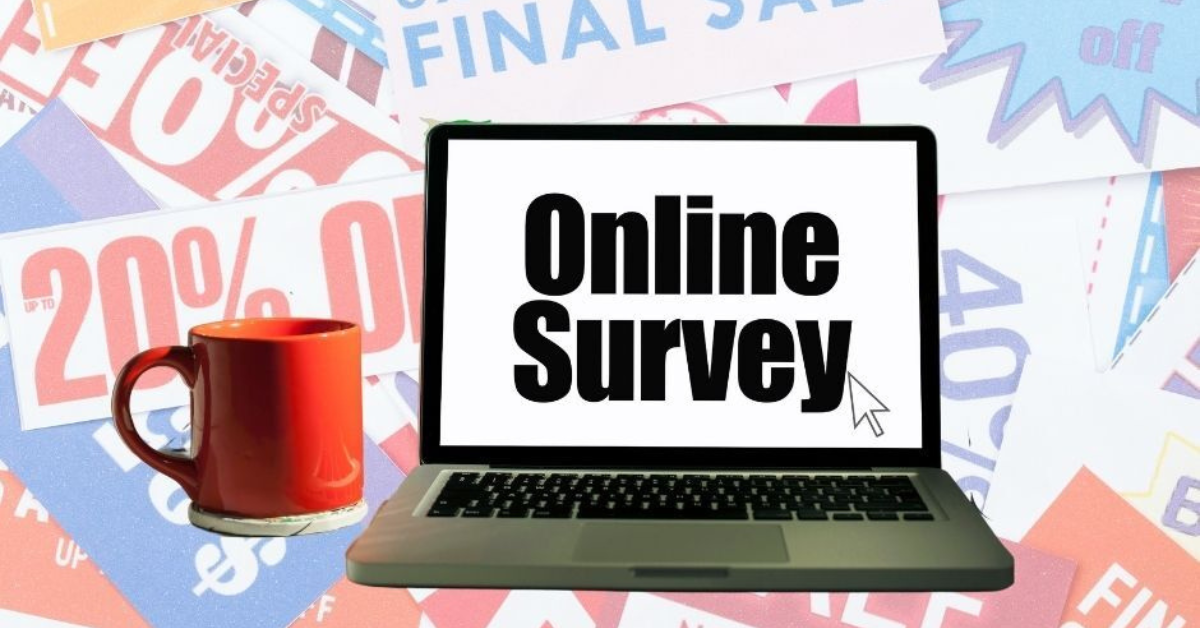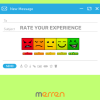If customers constantly abandon your surveys, you may want to introduce incentives for customer feedback. Offering an incentive for customer feedback is a straightforward way to make them more appealing while ensuring that you get genuine feedback in return. In this blog, we’re going to dive into the world of survey incentives. We’ll discuss what they are and the different types of incentives you can offer. Additionally, we’ll explore the benefits of offering incentives to your customers, including increased response rates.
This blog should equip you with everything you need to know to while building incentives for customer feedback and making the most of gathered insights.
What Are Survey Incentives?
Survey incentives refer to promotional goods, discounts, or monetary rewards provided to customers as a token of appreciation for their participation in surveys. They are an effective way for companies to collect vital demographic information including customer preferences, their reaction to certain products and services. Common survey incentive are gift cards, discount coupons, cashbacks, lottery or sweepstake incentives or some form of sample products to name a few.
Offering incentives to respondents can encourage them to provide honest responses in a feedback form. Companies employ this method to obtain various insights on their products and services. This helps marketers get a better understanding of their customers’ needs and cater to them more effectively. Bringing incentive into the picture could help companies collect more genuine and reliable data. This method is an excellent way to motivate your customers to partake in surveys and share their opinions.
Types of Survey Incentives
The kind of incentive you can offer will depend on certain factors while curating a customer feedback form. This includes the target audience, length of a survey, medium of survey distribution, budget allocation and the end goal of a survey. Here are some incentives that are commonly used. As per National Center for Biotechnology Information (NCBI), incentives have long been used as a method to enable people to complete a survey, monetary incentive being the most used. These methods have shown to be effective in bringing a good survey response rate and building brand loyalty. Here are some incentive ideas that you can use depending on the end goal:
Monetary incentives like cash vouchers or coupons can increase response rate:
Monetary incentive include a gift vouchers, cash prize, cashback for a certain transaction, discount coupons on the next transaction to name a few. These can be an effective way to motivate respondents to complete an online survey or an offline one. Studies have stated that bringing incentives into a survey can increase response rate even among hesitant respondents. As per the study, survey incentive of as much as $10 was encouraging for respondents. Companies can also use loyalty points as an incentive to gather customer insights. These reward systems can also be sent vial emailers or online mediums of communication.

Non-monetary incentives like freebies are encouraging:
Non-monetary incentives include a chance to win a prize, potential giveaway, a free product sample or a tester, rewards on membership cards (such as access to airport lounges or exclusive membership access) and membership access to new products first. These survey incentives are commonly used and are just effective and bring more brand loyalty. Offering these non monetary incentives also need to be curated based on the target audience. Many websites seek customer review or client data in exchange for a free ebook they can download. The ebook will usually have value added points that can be useful for readers.
Personalized value added incentive can get people to share feedback:
Some companies deploy customized feedback for their respondents based on their responses. For instance, based on the respondent’s health status, a health survey might provide personalized advice. This kind of a response reward is fruitful where the respondent will be interested in learning more about their health status. For example, a respondent might share their health history with a professional in turn for a free diet plan they can use. This enables customers to offer more insights in exchange for a reward that can elevate their health status.
Social incentive offer people a chance to share their view publicly:
People love to share opinions and feedback. When it is a public forum, extrovert respondents would like to feel heard. To add to this, social incentives work best in this case such as offering a recognition or status, featuring them on a company’s website or YouTube channel or social media pages. These survey incentives work very well with brands that actively monitor channels such as Twitter, Instagram, Facebook accounts. A chosen participant can share their honest product review and get a chance to feature on the brand page. This can also be a good idea for respondents who have an enthusiastic zeal to share insights in exchange for a spotlight.
Charity donation as an incentive for people willing to endorse a cause:
This kind of a streamlined incentive will appeal to a small group of people who are willing to support a cause. Several surveys provide the option of donating a set amount of money to a charity. For surveys where the respondent is concerned about endorsing a cause, this sort of incentive might be helpful.
What are the benefits of offering survey incentives ?

Increase response rate among different participants:
Adding a value or a survey incentive is more than just collecting insights. It encourages participants to share their feedback in the hope of getting a reward for the response they shared. Incentives can also increase response rate among hesitating participants. A greater response rate will truly represent the actual customer base of the organisation.
Customers feel valued and can promote brand loyalty:
Offering survey incentives is also a way to convey appreciation to the customers for participating, which can lead to better engagement in the future. By using incentives, companies can be sure to gather better data and feedback from their customer base for future growth and success. On the other hand, respondents will feel that their experiences are a valued metric for a brand’s growth. Most reward systems are a great way to
More feedback equals to more data for internal improvements:
A high response rate ensures one thing- maximum insights from customers. While providing reward is like a light at the end of a tunnel, companies get access to crucial customer insights. Using these insights, they can be better prepared to build better customer touchpoints and improve customer service.
How to use survey incentives as a reward for hard-to-reach people?
Several marketers only provide incentives to particular populations: those who are exceedingly unlikely to participate in any survey. Researchers who study healthcare professionals, for example, know it can be difficult to attract the interest of a busy surgeon, doctor, or nurse. As a result, they may provide an incentive to participate. Here are some tips you can use if you plan to launch surveys that need their valuable insights.
Guaranteed survey reward vs probability reward:
A guaranteed survey incentive is a reward that is to be offered to all participants who complete a survey. This means that if a participant completes the survey, they are guaranteed to receive the incentive in the form of a coupon or so. On the other hand, a probability incentive is a reward that is offered to participants based on their chance of winning, which is often determined by a random drawing or a probability-based algorithm. For example, a survey may offer participants the chance to win a prize, but only a certain number of participants will actually receive the prize.
The main difference between these two types of incentives is that a guaranteed incentive offers a reward that is certain, while a probability incentive offers a reward that is uncertain and dependent on chance. Additionally, guaranteed incentives may be more attractive to participants who are motivated by the reward itself, while probability incentives may be more attractive to participants who are motivated by the chance of winning or the thrill of competition.

Deciding guaranteed incentive vs probability incentive (sweepstake) based on target audience:
Busy professionals such as a hair dressers, a taxi driver, a businessman are hard to reach audiences. A survey incentive as much as $10 gift card would not deliver value to a corporate professional. In this case, A better reward system would be a higher monetary value that offers a guaranteed reward system.
For hard-to-reach audience, it is about considering if a high value guarantee reward system would deliver more value for for a specific set of audience based on their profession. If a high value monetary reward seems far fetched, a sweepstake or a probability based reward system would be a preferable call.
How can you make your incentive more enticing to people?
The key to making an enticing survey incentive is to understand your target audience and create customized reward systems that they will truly be interested in. Marketers need to consider the demographics and their social standing before creating incentives for customer feedback forms. However, offering lucky draw, cash prices, special one time use of discount code, access to a premium lounge can be a great way to encourage respondents to complete a survey. Additionally, the survey should also be deployed at a time when people will be available to share their feedback. Delivering the promised incentive immediately will ensure that you get maximum survey responses.
What should be the cost of survey incentives?
When brainstorming over incentives for customer feedback, it’s important to offer an incentive that’s appropriate for the investment participants are required to make. Survey incentives can take many forms, such as physical items (like free samples of a product) or monetary rewards (like gift cards). Companies must also consider their budget when deciding what type of survey incentives to use.
Non-monetary survey incentives, like free products or exclusive discounts, can be a great way to motivate respondents to give honest feedback. In this scenario, the onus falls on companies who bear the cost of a free sample. A cost-effective way to incentivize survey participants is to offer sweepstakes entries instead of direct monetary rewards. In the end, companies should weigh the costs of incentivizing their survey and choose the incentive that’s best suited to their budget while still motivating respondents to participate.
Conclusion
Whether you build a conversational survey or a long survey, inculcating incentives for customer feedback in surveys can boost response rates and improve the quality of your feedback. You can choose to offer monetary rewards or non-monetary incentives, make sure they align with your brand and target audience. Remember, the goal of survey incentives is to show appreciation for your customers’ time and insights, so make the incentive worth it. When all is promised and delivered, you not only get a high customer satisfaction score, but also additional customer loyalty. If you need help crafting the perfect survey incentive strategy, share your email address with us and a team will get in touch with you soon.





